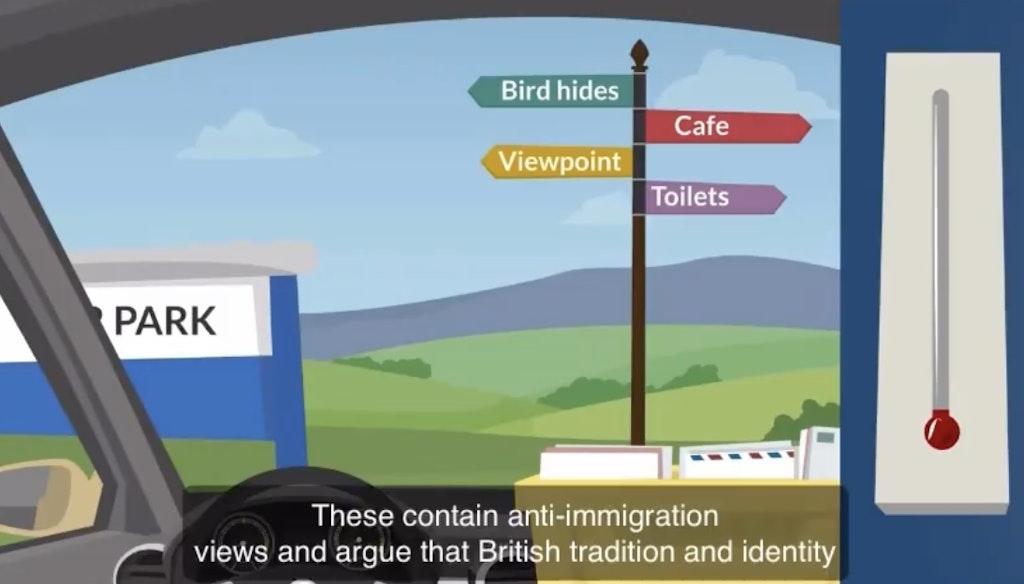PAP before swine
Processed Animal Protein feed — what could possibly go wrong?
The European Commission has recently announced that the EU will be allowing farmers to feed farm animals food made from insects and other animals. So far this only involves granivores — known as omnivores before the EU encouraged “farmers” to keep hundreds of thousands of chickens and pigs in zero-hectare farms, fed exclusively grains. According to the Guardian, the EU’s motivation is purely financial. Animal protein is cheaper than plant-based protein, and crucially is being used in other countries that are apparently undercutting EU and UK producers.
When questioned in the House of Lords the Minister for Rural Affairs and Biosecurity, Lord Benyon, made some surprising admissions. Apparently, the UK and EU’s supposedly “world class standards” for food safety that prevent importation of chicken meat washed in chlorinated water and beef from cattle drip-fed bovine hormones, already allow meat from animals fed on processed animal protein to be imported.
Apart from anything else, this is revelatory in terms of the EU’s efforts to stop British produced meat being sold in Northern Ireland by claiming that it could somehow contaminate the Single Market because it does not meet EU standards.
So how much of this “low standard” meat is being imported and where is it coming from? According to TradeMap, the UK’s five-year average chicken imports were 423,000 tonnes, but only 4 per cent of it comes from non-EU countries. These import amounts are insignificant: the UK produced 1.9 million tonnes of chicken in 2019 according to DEFRA, and like the 96 per cent of imports that came from the EU, would have been bred without the use of animal protein feed. So why would the UK change its regulations for fear of competition from imported chicken, equal to less than 1 per cent of our domestic production?
Similarly, with pork, over the last 5 years the UK has imported on average only 827 tonnes of pork from non-EU countries, out of average total imports of just under 400,000 tonnes. According to Trade Map most of the 827 tonnes came from the US with occasional smatterings of pork from Australia, Chile and South Africa. UK domestic pork production was 922,000 tonnes in 2019 so non-EU imports, that may have been fed animal protein, were less than 0.1 per cent of UK production.
Reintroducing feeding dead animals to live farm animals is a shocking idea
These imported amounts are not large enough to put domestic producers under any kind of competitive pressure. And yet somehow, the Minister for Rural Affairs believes that the UK has no choice but to follow the EU’s lead and also feed our pigs and chickens animal-protein based food. However, the largest determinant of trade competition is the relative currency values between the importing and exporting country. There are currently about 20 South African Rand and over 1,000 Chilean Pesos to the Pound – lowering UK feed costs will not make up for this difference.
There is more to this proposal than simply the need to lower animal feed costs.
Some History
After the BSE crisis in the 1990s, reintroducing feeding dead animals to live farm animals is a shocking idea. The disease, Bovine Spongiform Encephalopathy (BSE), which caused a progressive neurological disorder in cattle, is believed to have originated from feeding cattle a protein-based feed made from the rendered meat, bones, and nervous system of scrapie infected sheep. In total there were 184,500 cases of BSE, across more than 35,000 cattle herds in the UK.
The animal-based protein feed was euphemistically known as Meat and Bone Meal or MBM, a suspiciously similar name to the new Processed Animal Protein or PAP feed. It is interesting that animal feed producers never want to call their product what it is. Render can include dead farm animals, together with roadkill, abattoir waste, and even euthanised pets to produce fats for commercial use and protein for animal feed — including pet food. This process is not restricted to the UK, and it is used internationally.
The UK was not the only country affected by BSE, but it had by far the most reported cases. It is believed that as the UK has a proportionally larger sheep herd than other EU countries, dead sheep suffering from scrapie made up a greater proportion of the rendered protein used in animal feed in the UK. Certainly, many of the BSE cases found in the EU were traced back to animal feed from the UK.
Eating beef infected with BSE is believed to have caused 177 deaths from a human disease called Variant Creutzfeldt-Jakob-Disease (vCJD) in the UK. There are still vCJD victims whose brains are slowly degenerating, and the Government has set up the vCJD Trust to help them.
Although the Government was quick to ban UK consumers from eating meat on the bone or offal, and they banned cattle and sheep feed containing ruminant Meat and Bone Meal in July 1988, it did not become illegal to feed ruminants any form of mammalian protein until November 1994 and the export of MBM feed was not banned until March 1996.
As a consequence of BSE, over 4.4 million UK cattle were culled, and many independent UK butcher shops and hamburger restaurants were closed. Even now, any UK cattle killed over 30 months old must have their spine removed by the abattoir and sent for analysis for any trace of Transmissible Spongiform Encephalopathy (TSE).
The crisis also destroyed the UK’s beef export industry. The EU only lifted the ban on UK beef cattle completely, including live cattle exports to other EU member states, in May 2006, while Japan and the US only lifted their ban on UK beef imports in 2019 and 2020, respectively.
So, will PAP be different from MBM?
The Commission’s proposal to allow the feeding of processed insects to chickens is not controversial. Chickens are omnivores and naturally eat insects and worms if they can catch them, but pigs? Either way, it is the quantities involved in PAP that may be a problem. The difference between a safe substance and a poison is usually only the dosage. Will the Minister for Biosecurity set a maximum proportion of chicken feed that can be made of processed insect-based protein? Would we even be allowed to diverge from EU levels if we acquiesce to EU standards now?
Pigs are also omnivorous, but meat tends to make up less than 5 per cent of their diet if they are free to forage. Again, would there be limits on the amount of animal protein that could be fed to any pig herds or restrictions on what could be in it? It is currently illegal to feed swill to pigs in the UK as this often caused outbreaks of swine fever. An outbreak of this disease caused millions of pigs to be culled in China in 2019.
On the positive side, chickens are not mammals and so there is a lower chance of any viruses jumping from pig-based PAP to the chickens that eat it and vice versa. It is also worth noting that domestically processed animal protein made from rendered waste animals will have a production carbon footprint but no additional transport footprint, unlike soy-based feed.
Rendered waste animal protein will be cheaper still
If insect-based protein is cheaper than plant-based protein, then rendered waste animal protein will be cheaper still. Hopefully, the Minister for Rural Affairs and Biosecurity will legislate to prohibit any diseased animals being included in the PAP render. Although testing for diseases would push up the price of rendered protein and discourage its use. Meanwhile importing insects and probably undetected insect eggs or larvae could create a new problem for Britain’s agrarian farmers, if not for its chicken farmers.
Is this just a political manoeuvre?
It seems strange that the EU, an entity that stops at little to protect its farmers from commercial competition, would even be contemplating such a change in its regulations when there is a commercial advantage, and an easy justification, for not changing them.
Is this just a way for the EU to demonstrate its power over the UK? Forcing Northern Ireland to adopt these new feed rules would do far more damage to UK sovereignty and the integrity of the UK than simply setting the PAP among the chickens.
The UK’s National Farmers Union has been busy trying to block any new UK trade deals with non-EU countries by claiming that the UK has the “highest food standards in the world” and implying that all non-EU countries fall short of these criteria. But how could they continue claiming this if the UK lowers its standards on animal protein feeds at the behest of the EU?
Instead, the UK should call the EU’s bluff. This is a phenomenal opportunity for the UK to differentiate its pork and poultry products from other EU producers, and a chance to block a large part of its imported competition in these markets. The UK could actually have the highest food standards in Europe, if it did not reintroduce rendered animal protein in farm animal feed.
The ability to block imports of EU pork, around 40 per cent of the pork consumed in the UK each year, would be worth a lot more financially to UK pork producers than a small reduction in their feed costs. And unlike cattle, pig production can be upscaled very quickly as sows have litters of 8 to 12 piglets twice a year. Any struggling beef or sheep farmers should be encouraged to diversify into pig farming.
The UK has nothing to lose. If the EU diverges, we block the imports that no longer meet our standards. Our pork producers benefit. UK consumers will be able to enjoy delicious UK produced pork without worrying about what rendered garbage it was fed. Who knows, the UK might even be able to export its pure pork to the EU.
This article is a reduced version of a longer article published in Briefings for Britain
Enjoying The Critic online? It's even better in print
Try five issues of Britain’s most civilised magazine for £10
Subscribe














